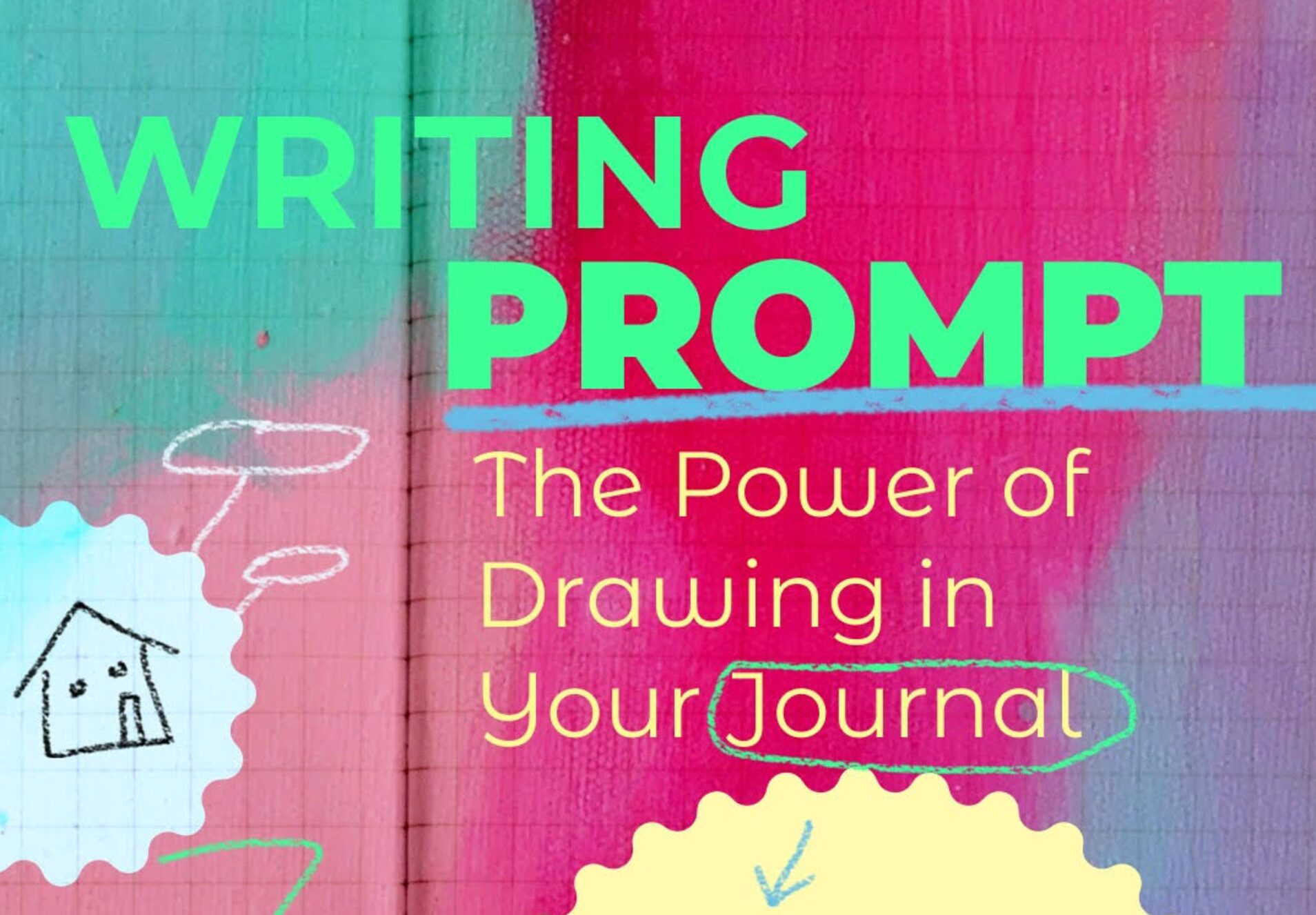
PRISM Prompts is a treasure chest full of muses, wonderings, and inspiration for both seasoned writers who are itching for a new approach to their craft and new writers who are looking for a place to get started, somewhere outside of the blank page. Turn the key, lift the lid, and look inside. Take whatever shines the brightest or the strangest, bring it home with you, and write.
I am not a visual artist. I am a writer who makes visual art. Drawing can be an exciting form of creative expression all on its own. It can also be a way to brainstorm about new characters, sticky plot points, and even inspire intricate details in your world-building process.
My journey with journaling started in a creative writing class I took with novelist Kathryn Kuitenbrouwer at the University of Toronto. For the course, we were required to keep a journal. Specifically, a big, sloppy, ugly journal—like the ones they make you buy for classes in elementary school. At first, I was afraid. I knew that anything I would doodle would look like it was made by an actual elementary schooler (an untalented one). But somewhere in the process of drawing for that class, I realized: it’s so freeing to be bad at something.
Sometimes, staring at a blank page or a scene that isn’t working can be daunting. Stepping away from writing and into a separate zone can completely change how I think about a story. Suddenly, I’ve entered a space where I’m not just allowed to be messy, but where my inner editor doesn’t even bother speaking up because, let’s face it, there’s no hope that I can turn this drawing into something beautiful. Whether or not that’s true, thinking that way allows me to be playful on the page and then bring that playful energy back with me into the writing process.
Once you’ve started keeping a journal, you can get more and more specific with how you play pretend in your drawings. Here’s my thought, and you may have heard this one before: the medium is the message. This phrase was invented by cultural critic and communications theorist, Marshall McLuhan. He was fascinated by the way the medium used to convey an idea influences how one perceives that idea. In my writing practice, I apply his thinking to the tools I use to create visual art.
Someone asked me once how a novel I was writing carried such a childlike imagination. I told them, it’s because I do all of my brainstorming with Crayola markers and crayons.
If I wanted to write a bleak, lyrically toned book, I might do all of my drawings in charcoal.
If I wanted the writing to carry the soft, flowy feeling of an impressionist painting, I might only brainstorm in diluted acrylic paint.
This approach can be used to develop a cohesive mood for a whole project. You could also choose a different tool for each major character, and explore the story that way. Is your protagonist a watercolor painting or a diorama made of playdough? Are they finely wrought with a Chinese fountain pen or bursting with the textural multiplicity of a collage?
Put yourself in the right mindset to capture the beauty or the playfulness of your story by working in a medium that evokes that same feeling. And don’t worry about the outcome of the visual art. It’s all about the process, not the result!
Prompt: Explore a new medium!
1. Pick a visual art implement that speaks to the overall tone of your narrative and/or the personality of your protagonist.
2. Using that tool, draw your protagonist.
3. Then, draw three things that are important to your character. These could be items, places, or memories.
4. Now, label each of your drawings with short phrases, even lines of poetry, that speak to each object or scene. Here’s an example of one approach to this step:
5. Use your combined creations of language and art as the impetus for a new scene in your story.
Victoria McIntyre is a writer currently working on the unceded lands of the xʷməθkʷəy̓əm (Musqueam), Sḵwx̱wú7mesh (Squamish), and səl̓ilw̓əta (Tsleil-Waututh) Nations. She is the Reviews Editor at PRISM international. She is also an MFA candidate in Creative Writing at the University of British Columbia. Her work has been published by The Scholastic Art & Writing Awards, The Goose, The Hart House Review, and others.